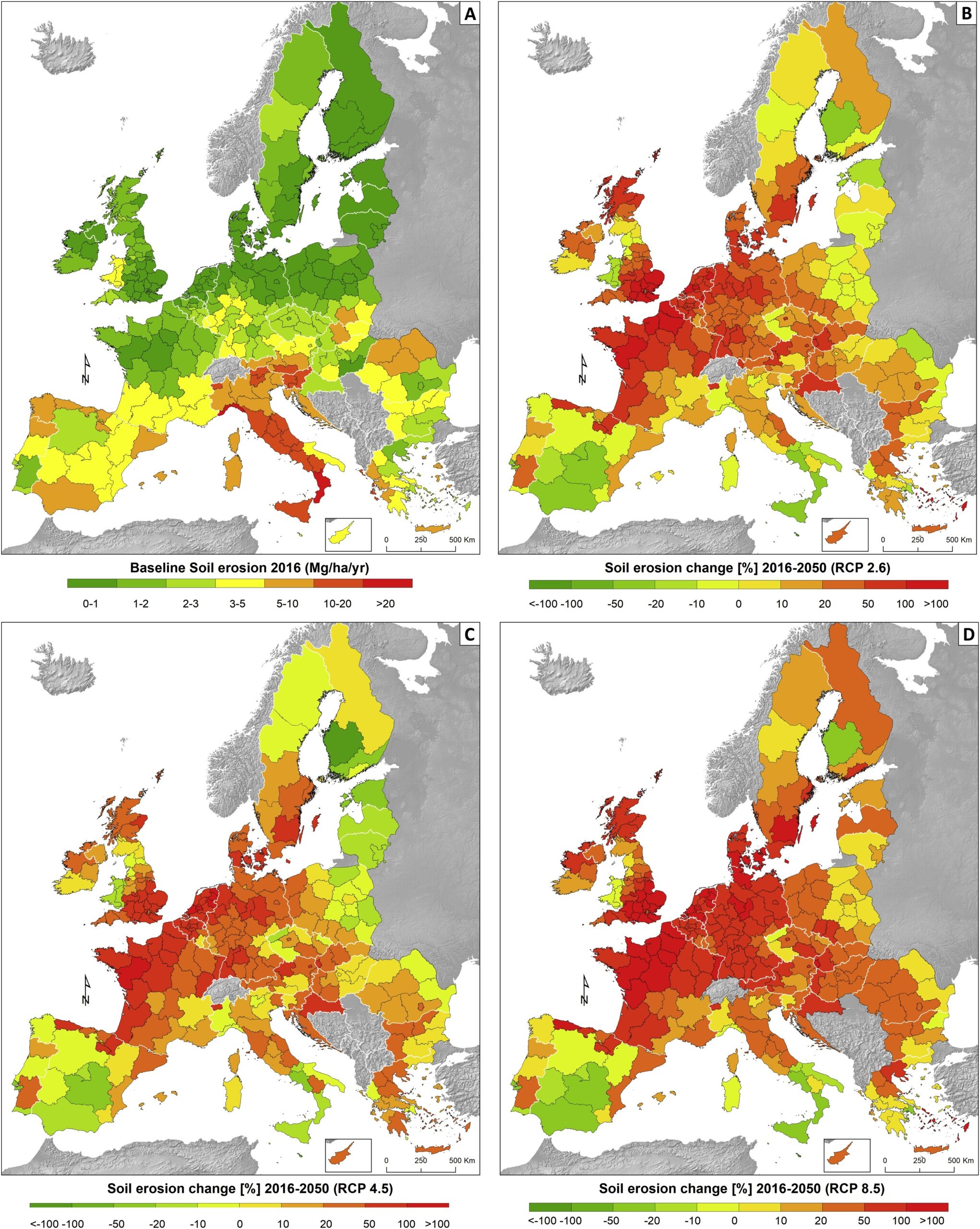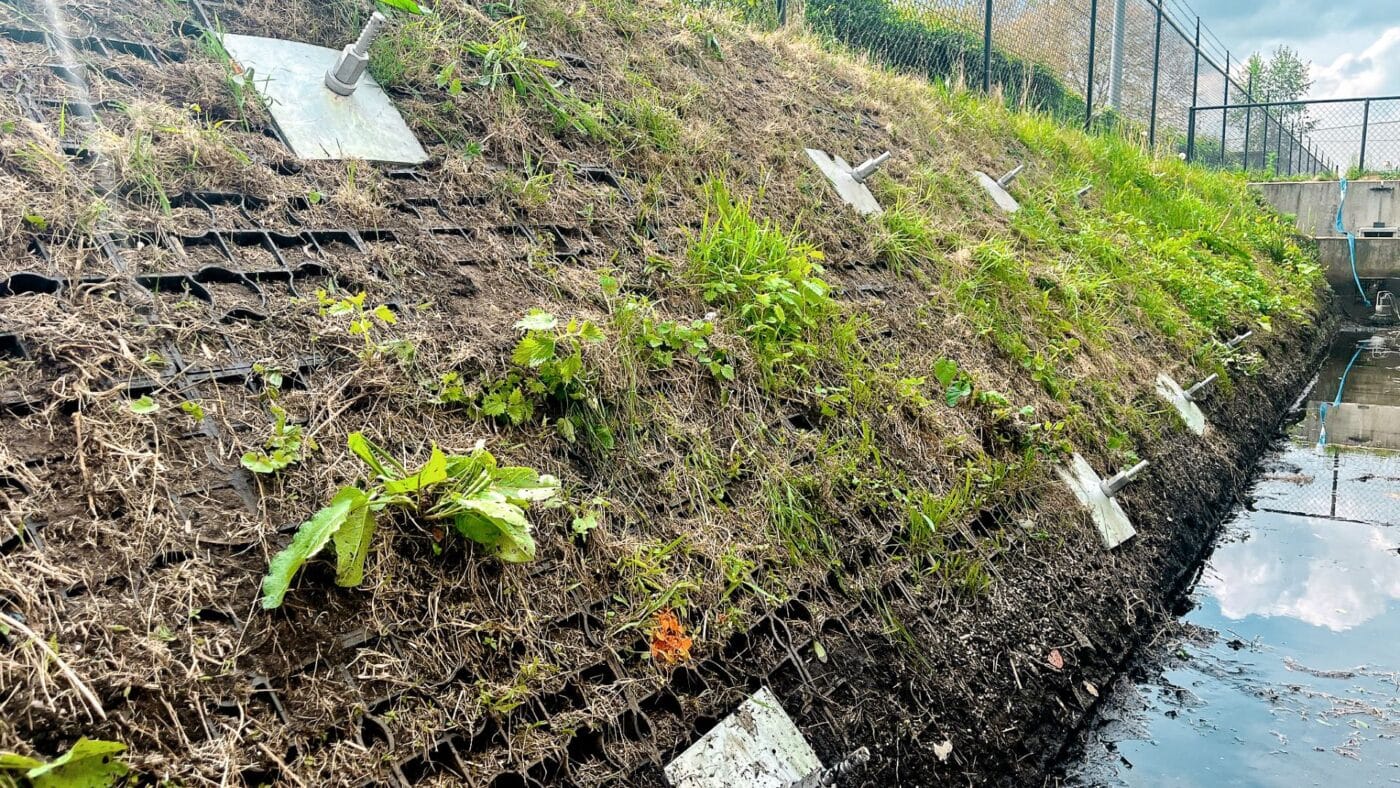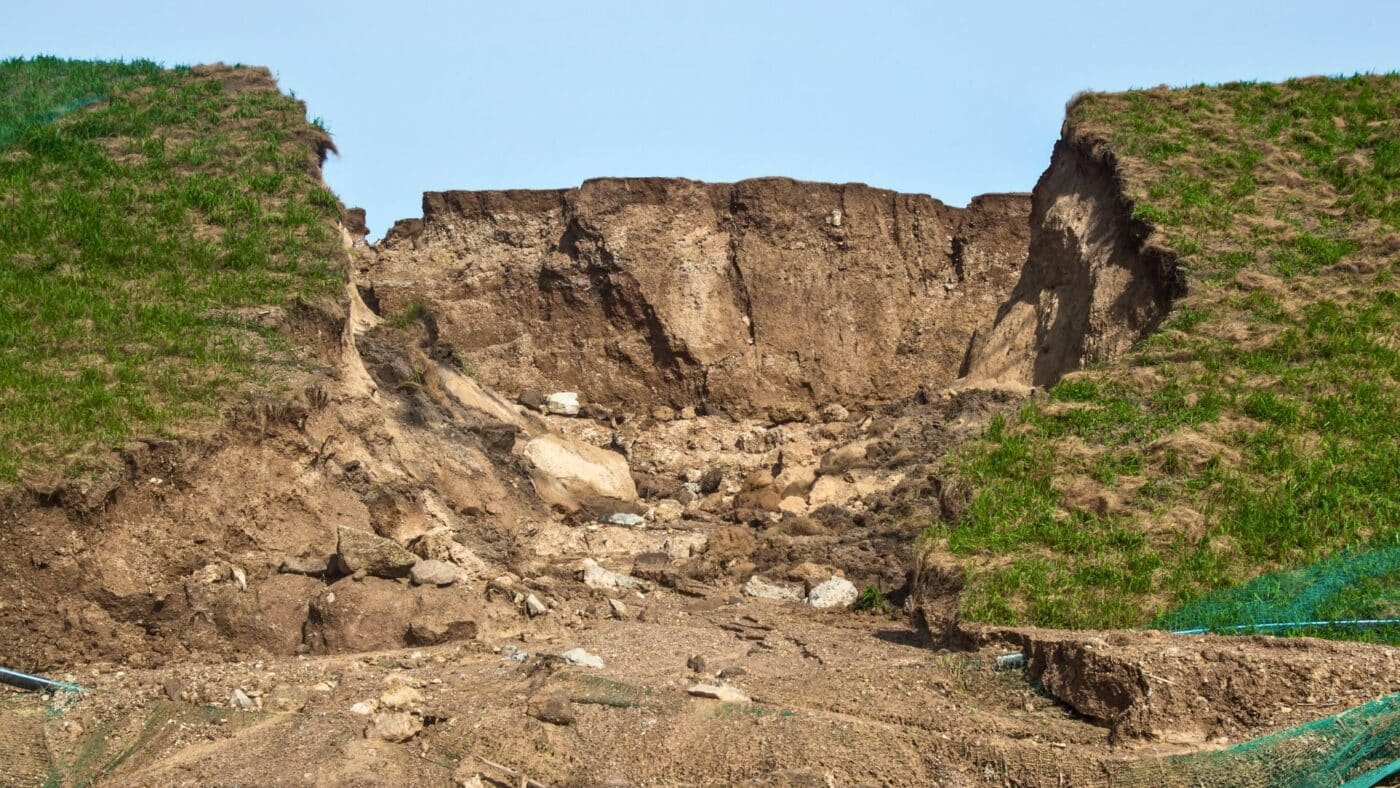Soil erosion is an increasingly pressing issue worldwide. The effects of extreme weather, such as heavy rainfall and storms, are becoming more evident, causing slopes, riverbanks, and embankments to lose stability. This not only impacts biodiversity in our environment but also poses risks to the safety of our infrastructure. Therefore, it is crucial to take timely measures against soil erosion.
Soil Erosion in Central and Northern Europe
By 2050, soil loss due to water erosion (a specific form of soil erosion) in the EU and the United Kingdom is expected to increase by 13 to 22.5%. This projection comes from research by Panagos et al. (2021) commissioned by the Joint Research Centre of the European Commission. The increase is mainly caused by more frequent and intense rainfall as a result of climate change. Heavy precipitation loosens the soil, making it more susceptible to being washed away, especially on agricultural land lacking sufficient cover. In many regions, particularly in Central and Northern Europe, erosion rates are projected to exceed the sustainability threshold of 2 tons per hectare per year. Consequently, soil fertility decreases, and the soil retains less water, creating a vicious cycle: soil erosion weakens the soil, making it even more prone to further erosion.

The figure shows how soil loss in different regions is expected to change in the future compared to the current situation (Source: Panagos et al., 2021).
Preventing Soil Erosion
Timely tackling soil erosion is crucial to prevent lasting damage to nature and infrastructure. Once the fertile topsoil is gone, it takes years or even decades to restore soil quality. Research by Liu et al. (2024) shows that it takes on average 29 to 31 years for depleted soil to regain enough nutrients and a healthy composition to function properly. Furthermore, the risk of flooding, crop loss, and water pollution increases when soil erosion is not addressed in time.
Soil Stabilisation with Earth Anchors
The problem is clear, but is there a solution? Fortunately, there is: proven techniques can effectively combat soil erosion. Vulcan® Earth Anchors are used to stabilise the soil in combination with geotextile. Geotextile is a permeable textile material used in civil engineering and construction to enhance ground stability and reduce erosion. The Earth Anchors are driven into the ground with a drive rod. They are then tensioned with a jack, locking the anchor into the soil. This ensures the geotextile remains firmly in place. Earth Anchors are highly versatile and can be applied in erosion-prone areas such as embankments, dikes, slopes, and riverbanks. Vulcan® is a proven system that has been successfully applied worldwide in countless projects since 1995.
Biodiversity on Slopes
Besides preventing soil erosion, promoting biodiversity on slopes is an important focus. Vegetation not only helps hold the soil in place but also enhances biodiversity in our environment. Geotextile, combined with Vulcan® Earth Anchors, offers an intelligent solution. This system is designed to allow plant growth through the openings of the mats. As a result, grasses, flowers, and native plants can establish themselves on the slope, creating habitats for birds and insects.

Combating Soil Erosion Starts with Smart Choices
Soil erosion is an urgent issue that requires sustainable and practical solutions. By using Vulcan® Earth Anchors, soil erosion is prevented, and biodiversity on slopes is encouraged.
Want to stay ahead of damage caused by soil erosion? A non-binding consultation can help develop a practical approach together. We are happy to share our knowledge and experience with you. Plan a free consultation:
Request a consultation

